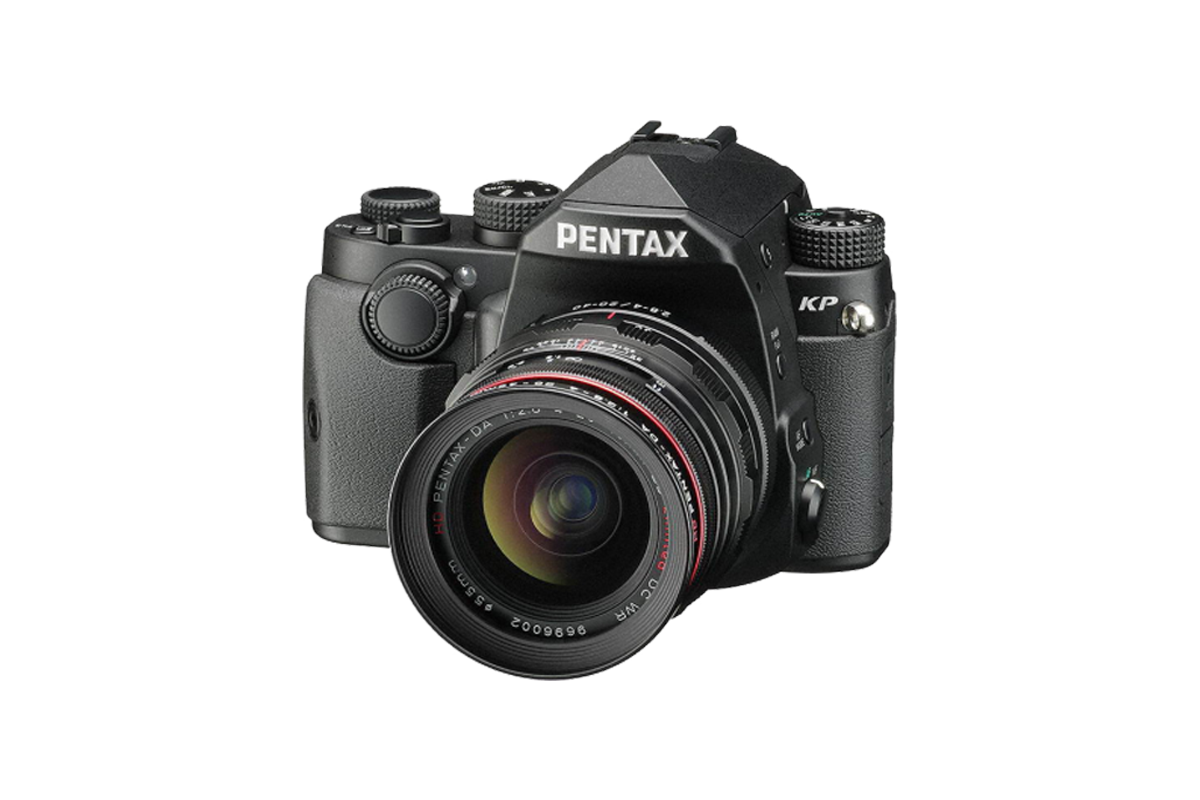Ricoh might not steal the headlines like Sony, Canon and Nikon, but that doesn't mean it hasn't been working away, slowly improving its range of Pentax cameras. After launching the K-3 in 2013, the brand refined the formula with pixel-shift technology on the K-3 II in 2015. Now, that camera has been replaced by the KP, a compact DSLR capable of shooting at ISO 819,200.
We'll get to that stratospheric ISO capability in a minute, but there's more to this camera than a headline low-light figure. As it was on the K-3, the new body is weather sealed and dustproof, and Ricoh says it will perform in temperatures down to -10°C (14°F). The body adopts a similar design to the slab-sided K1, although the KP is much smaller than the full-frame Pentax offering, and lacks the funky articulating screen fitted to that camera. What it does get is a new grip, which can be changed to suit different-sized lenses and, of course, hands.
Under the skin, the new KP runs with a 24-megapixel CMOS sensor capable of shooting at a sky-high ISO 819,200. Sure, you'd only stretch to that point as a last resort, but the fact the camera is capable of such stratospheric sensitivity is impressive.
The new sensor works in tandem with a new five-axis shake reduction system. As well as shake caused by horizontal and vertical shift, the system can compensate for roll, pitch and yaw. Ricoh says the system – named SRII – provides up to five stops of stabilization, allowing users to shoot handheld in a wider range of conditions.
On top of the new SRII stabilization system, the KP has been fitted with the same Pixel Shift Resolution technology as the K-3 II. Using the camera's stabilisation system to move the image sensor, Pixel Shift takes four separate images, before combining them into one high-definition image. We found the system worked well when shooting stationary subjects on the K-3 II when we put it to the test in 2015, so it will be interesting to see how Pentax has improved it for 2017.
Although these headline features are impressive, the specs of the KP are lacking in some key areas. For one, it will only shoot video at 1080p, whereas Nikon and Sony rivals will shoot 4K. The standard USB 2.0 port means slow file transfers, and there is no HDMI port for direct connection to a television.
Pricing for the KP starts at US$1,099 when it goes on sale in February.
Source: Ricoh











